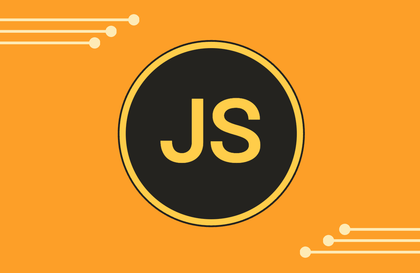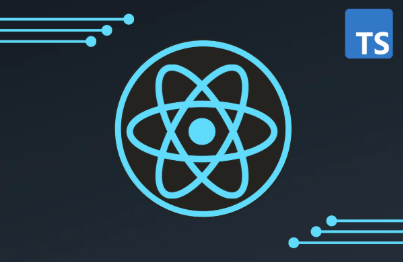
핵심만 골라배우는 JavaScript
수코딩
프론트엔드 입문자들은 필수적으로 익혀야하는 Javascript 문법! 기초부터 시작해서 고급에 이르기까지 javaScript 언어를 샅샅히 파헤쳐봅니다!
Beginner
JavaScript
A comprehensive React course learning the latest features of React 19 with TypeScript! From the basics to state management (Context, Redux Toolkit, Zustand), API communication (Fetch, Axios), the latest hooks (use, useActionState, useOptimistic, etc.), and practical projects, you will gradually learn to build React apps that can be immediately applied in real-world work.

Understanding TypeScript Basic Syntax and Type System
React component structure, JSX syntax, usage of props & state
React + TypeScript State Management Techniques (useState, useReducer)
Iterative rendering, conditional rendering: core syntax and type safety
TypeScript-based form handling and validation (controlled/uncontrolled)
Latest styling techniques (CSS Module, Styled-component, emotion, vanilla extract, tailwind css
Global State Management with Context API
Structured state management with Redux Toolkit
Simple and Fast State Management Implementation with Zustand
Reusing logic with custom hooks
Performance Optimization: useMemo, useCallback, React.memo
Component Structure Design and Folder Structure Organization Strategy
The Highlight of React 19 !!! Handling asynchronous data with use() + Suspense + ErrorBoundary
Implementing optimistic UI with useOptimistic()
Integrating form processing and state management using useActionState()
Implementing SPA Routing with React Router (v7)
Page Transition and Dynamic Routing Handling
Fetching API Data and Error Handling with Fetch and Axios
TypeScript-based real-world project planning and design
State management + API communication + Routing integrated example implementation
Real-world project code management and finalization (node.js + express + mongodb + kakao + react 19))
Who is this course right for?
Frontend beginner new to React.
JavaScript-based React familiar, TypeScript unfamiliar developer
Those who want to systematically compare state management tools (Context, Redux Toolkit, Zustand)
A developer keen to apply React 19's new features in practice
Prospective job seeker who wants to complete a React project for their portfolio
Need to know before starting?
html + css
javascript
typescript
4,724
Learners
243
Reviews
113
Answers
4.9
Rating
7
Courses
수코딩은 온라인과 오프라인을 병행하면서
코딩을 가르치는 활동을 하고 있습니다.
다년간의 오프라인 강의 경험을 바탕으로,
더 많은 사람들이 코딩을 쉽고 재미있게 배울 수 있도록
매일 고민하고, 끊임없이 노력하고 있습니다.
현재까지 다음과 같은 4권의 책을 출판하며
프런트엔드 강의 분야를 선도하고 있습니다:
또한, 유튜브 채널을 통해 다양한 무료 강의도 제공하고 있습니다.
👇 지금 바로 방문해 보세요
[유튜브 채널 링크]
All
317 lectures ∙ (26hr 54min)
Course Materials:
All
38 reviews
4.9
38 reviews
Reviews 5
∙
Average Rating 5.0
Edited
5
중간에 미션 파트가 있어서 스스로 문제를 해결할 수 있는지, 얼만큼 개념을 이해했는지 확인할 수 있어서 정말 만족하고 있습니다. 다음 강의가 많이 기다려집니다. 빨리 나왔으면 좋겠네요! 개인적으로 선생님 강의 스타일이면 자료구조/알고리즘 강의도 잘 만드실거 같다고 생각합니다.
안녕하세요 곰코드님! 좋은 말씀 정말 감사합니다! 미션 파트가 도움이 되었다니 보람을 느낍니다. 앞으로도 학습에 재미와 성취감을 드릴 수 있도록 준비하겠습니다. 자료구조/알고리즘 강의에 대한 의견도 소중히 참고하겠습니다. 다음 강의도 기대에 부응할 수 있도록 열심히 준비하겠습니다!
Reviews 5
∙
Average Rating 5.0
Edited
5
짧게 짧게 기본 개념부터 설명을 해주셔서 정말 좋습니다 매번 느끼지만 수코딩님의 강의는 '책을 읽어주는 강의' 라고 느껴집니다. 텍스트로 읽었을 때는 어렵지만 말로 풀어서 자료와 함께 보여주시니 정말 잘 와닿는 것 같아요! 추가적으로 최근에 프론트 기술면접 공부를 시작했는데 강의에도 이러한 내용들이 잘 녹아있었습니다. 여러모로 유익한 강의 감사합니다.
소중한 피드백 감사합니다! 텍스트로 어려운 부분을 쉽게 풀어서 전달할 수 있도록 항상 노력하고 있습니다. 앞으로도 더 도움이 될 수 있도록 계속 발전하겠습니다! 감사합니다 😀
$77.00
Check out other courses by the instructor!
Explore other courses in the same field!